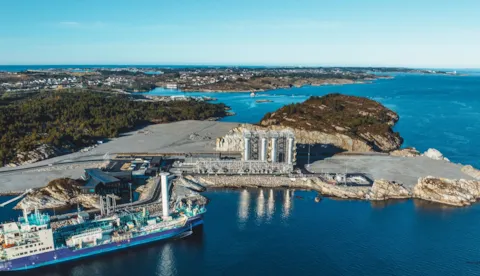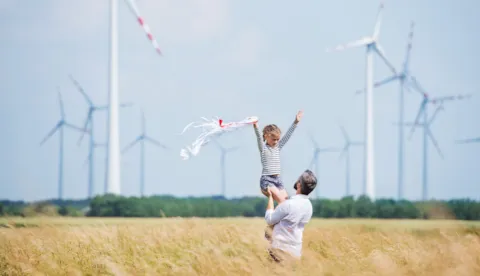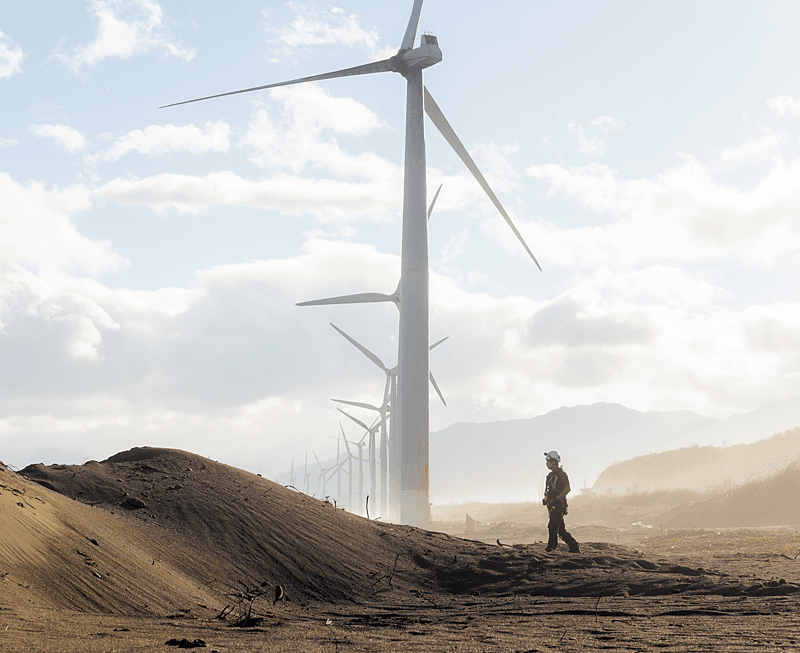The global transition toward clean energy is inevitable, but the pace of emissions decline remains too slow to meet the Paris Agreement goals. According to DNV’s latest Energy Transition Outlook, emissions are not even expected to halve by 2050, reaching net zero only toward the end of this century. As geopolitical tensions intensify and global cooperation wanes, COP30 marks a critical juncture and urgent action is needed in all sectors and all regions to close the gap between ambition and reality.
The transition is underway
- By 2060, fossil fuels’ share in the global energy mix will drop from 80% today to 36%. By historical standards, this pace of change is unprecedented.
- Electricity is growing and becoming greener, with solar and onshore wind projected to make up 32% of the global electricity mix by 2030.
- Lagging grid buildout is slowing progress. In Europe, without the present ‘gridlock’ solar capacity would be 16% higher in 2035 and wind capacity 8% higher.
- Slow scaling of decarbonization solutions in hard-to-electrify sectors like heavy industry, maritime, and aviation is an ongoing challenge. These sectors have been particularly hit by the economic slowdown and lack of global cooperation.
- Global CO2 emissions are projected to reduce 43% from today by 2050 and 63% by 2060. This means a massive amount of fossil fuels will be displaced by clean energy in the coming decades, but we are still expected to reach net zero only after 2090.
- This trajectory results in warming exceeding 2°C by 2100. Reaching the Paris Agreement’s ‘well below 2°C’ target is still possible, but urgent action is needed on all fronts.
How can we accelerate the energy transition?
Accelerating the energy transition requires coordinated action across sectors, technologies, and borders. The good news is that the transition is underway, although progress is uneven and too slow to meet climate goals.
To close the gap, we must prioritize grid expansion, streamline permitting, and invest in flexibility. In hard-to-decarbonize sectors like heavy industry, maritime, and aviation, scaling hydrogen, sustainable fuels, and carbon capture is essential. These technologies exist, but deployment lags due to cost, policy uncertainty, and lack of infrastructure. Finance must flow faster and more equitably. Emerging economies need support to leapfrog fossil dependency and build resilient, low-carbon systems. Global cooperation is critical: no country can decarbonize in isolation.
The transition is not just a technological challenge, it’s a systems challenge. At COP30, we must move from fragmented ambition to collective implementation.
DNV at COP30
At COP30, DNV will collaborate with customers, policymakers, sector associations, and other third-sector players to discuss the challenges and opportunities related to policy, AI, finance, and decarbonization, and create bridges to a more sustainable world.
DNV is part of the Norwegian business delegation to COP30, which will showcase the expertise, experiences, and solutions of Norwegian businesses committed to accelerating the energy transition. The Norwegian Pavilion will host a series of events on technology, security, decarbonization, biodiversity, circular economy, and more. Explore our events at COP.
Meet the team at COP30

Al-Karim Govindji
Global Head of Public Affairs, Energy Systems
Al-Karim looks forward to connecting with you on global energy policy, geopolitics, energy transition, and NDCs. He engages actively with governments, sector associations, and customers on a range of topics, including renewables, oil and gas decarbonization, CCUS, grids, and AI. Get in touch with Al-Karim.

Angelos Pastras
Senior Energy Storage Consultant, Energy Systems
Angelos has served as a delegate each year since COP26 and currently leads the Commonwealth Sustainable Energy Transition Youth Action group. He is an Institution of Civil Engineers (ICE) UK Carbon Champion, a Rising Leader Fellow with Aspen Institute UK, and a member of the Young Engineers Future Leaders for World Federation of Engineering Organisations (WFEO). Get in touch with Angelos.

Astrid Kristoffersen
Group Director Research & Development
Astrid will be engaging with policymakers and industry representatives with the mission to accelerate the energy transition. As the director of DNV’s strategic R&D unit, her portfolio includes research into energy and digital transformation, with a focus on AI-enabled systems supporting the energy transition. Get in touch with Astrid.

Edwin Aalders
Service Manager – Decarbonization and Environmental Sustainability, Global Assurance Services
Edwin’s extensive experience in international climate change negotiations has seen him work with multinational organizations such as the UNFCCC, UNEP, European Commission, and World Bank. He is a member of several advisory boards and steering committees for organizations that aim to develop new programmes under the umbrella of climate change and the UN SDGs. Get in touch with Edwin.

Sverre Alvik
VP and Director, Energy Transition Outlook
Heading up DNV’s Energy Transition Outlook since its inception, Sverre is responsible for DNV's global and regional research on the technologies, economies, and policies related to the energy transition. He engages extensively with governments, industry, universities, and research institutes. Get in touch with Sverre.

Coutinho
Tchiarles Hilbig Coutinho
Market Area Manager – South America, Energy Systems
Tchiarles leads DNV’s energy market strategy across South America, supporting developers, investors, and policymakers in advancing the energy transition through renewable sources and emerging technologies. Tchiarles is also a board member of the Brazilian Wind Energy Association (ABEEólica) and Vice-Coordinator of the technical committee at Sindienergia-RS. Get in touch with Tchiarles.
Scaling renewables
Scaling renewables is key to accelerating the energy transition. What are the challenges, opportunities, technologies, and solutions to help us get there?
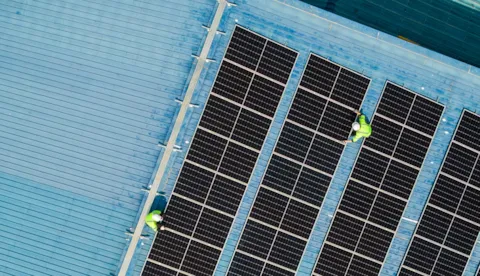
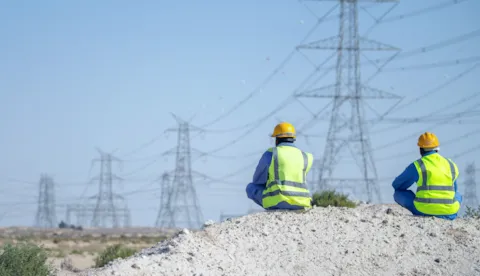
Energy Industry Insights

Decabonizing hard-to-abate sectors
DNV emphasizes the need for rapid deployment of transformative solutions in hard-to-decarbonize sectors like maritime, heavy industry, and high-heat manufacturing.
AI and digitalization
Digital transformation is essential for driving the energy transition. As future energy systems grow increasingly complex, only the effective implementation of digital technology – including AI - can manage this complexity.
View our short films: The Great Transition
These short films address one of humanity’s greatest challenges: achieving a successful energy transition. The goal of the films is to humanize the energy
transition. Our story is told through the personal lens of fictional characters. We want to show how we can achieve the targets set by the Paris Agreement, or at least, at a minimum, bridge the gap.
Read more about The Great Transition movement and watch the films.

